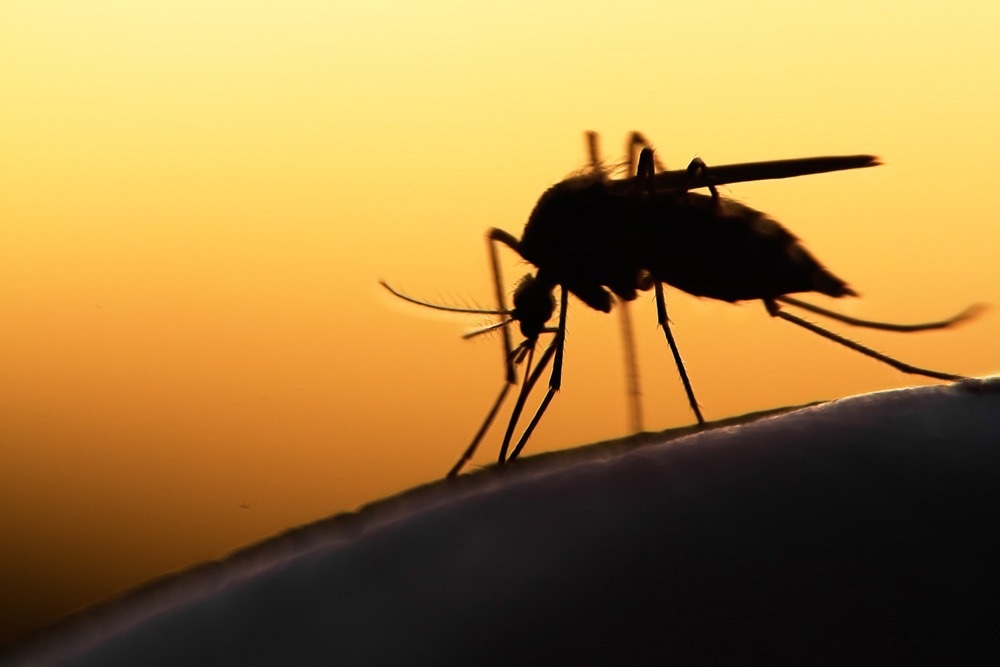A team of US-based scientists has described the usefulness of human landing catch as an alternative method to collect mosquitoes that are potent vectors of West Nile virus. The study is currently available on the Research Square* preprint server while under consideration for publication in BMC Parasites & Vectors.

Background
West Nile virus is a zoonotic mosquito-borne virus that causes human and animal diseases. Birds are the natural host of the West Nile virus, and the maintenance of the viral life cycle in nature involves transmission between birds and mosquitoes. Mosquitoes belonging to Culex genus are the primary vectors of this virus.
West Nile virus is highly endemic to North America. Since it arrived in the US in 1999, the virus has caused over 52,000 infections in humans, with a fatality rate of 4.7%. Currently, the virus is circulating throughout the US, including the locations monitored by strict mosquito control programs.
In the US, the surveillance of West Nile virus is primarily done by gravid traps and CO2-baited light traps. While gravid traps specifically collect Culex mosquitoes, light traps are designed for more generalized mosquito collection. Both methods collect many mosquitoes that are often damaged during the capture process. This makes morphological identification of West Nile virus vector mosquitoes difficult.
In the current study, scientists have evaluated the effectiveness of human landing catch collection methods in attracting and capturing Culex mosquitoes.
Human landing catch is a simple and accurate method to monitor and collect vector mosquitoes. The method is performed by mosquito collectors who expose their limbs to attract and collect mosquitoes that come for human bloodmeals.
Study design
Human landing catch methods were performed between July and September of 2018 and 2019. A total of 55 natural locations in the northwest suburbs of Chicago were selected for collecting mosquitoes. All locations were within the Northwest Mosquito Abatement District, which was formed to control disease-causing mosquitoes.
Human collectors exposed any one of the limbs weekly for 15 minutes at crepuscular periods (5:00-8:30 am and 6:00-9:30 pm). Culex mosquitoes are most active during these periods. They used a mechanical aspirator to collect mosquitoes within 3-4 seconds after landing on the exposed skin.
Genetics & Genomics eBook

Compilation of the top interviews, articles, and news in the last year.
Download a copy today
Collected mosquitoes were subjected to morphological and genomic testing to identify Culex species distinctly. Most of the collected mosquitoes were non-Culex species and were considered a nuisance to the public. The “nuisance factor” and “human West Nile virus added risk” were derived using mosquito biting rates and human host availability.
The data obtained from human landing catch methods were compared with the historical data of mosquito collections via gravid traps and light traps from four locations in Chicago.
Important observations
A total of 223 mosquitoes were collected by human landing catch methods; 46 were Culex species. The majority of collected Culex species were Culex salinarius (74%), generally considered less abundant in the upper Midwestern US.
Of 55 selected locations, 33 were without Culex mosquitoes. During the entire mosquito collection period, a total of 2,821 individuals were present in the locations. Based on these estimates, the estimated range of nuisance factor was 32 to 0. Similarly, the estimated range of human West Nile virus added risk factor was 1.4 to 0.
The historical data used in the study included a total of 1,930,680 mosquitoes collected via gravid traps and light traps. About 76% of them were Culex mosquitoes. Gravid traps collected a higher number of Culex mosquitoes than light traps.
Considering each trapping effort, gravid traps and light traps collected 7.5-times higher numbers of Culex mosquitoes than human landing catch methods.
Study significance
The study highlights that the human landing catch method effectively identifies and collects Culex mosquitoes, which are potent West Nile virus vectors. The genetic and morphological analyses of collected mosquitoes identify Culex salinarius as a potential carrier of West Nile virus. The abundance of Culex salinarius mosquitoes has been underestimated in the US because commonly used trapping methods are less effective in catching this particular species.
Given the potential health hazards that may arise from mosquito-borne pathogens, scientists recommend implementing proper personal safety measures for human collectors before any systematic application of human landing catch methods.
*Important notice
Research Square publishes preliminary scientific reports that are not peer-reviewed and, therefore, should not be regarded as conclusive, guide clinical practice/health-related behavior, or treated as established information.
- Uelmen, J. et al. (2022) "Human biting mosquitoes and implications for WNV transmission". Research Square. doi: 10.21203/rs.3.rs-1999780/v1. https://www.researchsquare.com/article/rs-1999780/v1
Posted in: Medical Science News | Medical Research News | Disease/Infection News
Tags: Genetic, Genomic, Mosquito, Research, Skin, Virus, West Nile Virus

Written by
Dr. Sanchari Sinha Dutta
Dr. Sanchari Sinha Dutta is a science communicator who believes in spreading the power of science in every corner of the world. She has a Bachelor of Science (B.Sc.) degree and a Master's of Science (M.Sc.) in biology and human physiology. Following her Master's degree, Sanchari went on to study a Ph.D. in human physiology. She has authored more than 10 original research articles, all of which have been published in world renowned international journals.
Source: Read Full Article
